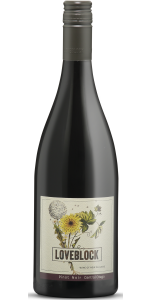
Description
Tasting Notes Colour: Bright crimson. Aroma: Big, ripe black cherry with hints of mushroom and toasty oak spice peeking out behind rich fruit. Palate: Fleshy black plum, with layers of cherry and sweet berries that play on the palate and dance with hints of violet and savoury notes.
Awards
Certifications
Alcohol
13.5%
Analytical data
dry
Vineyard
The Pinot Noir grapes come from our family-owned estate on the Bendigo Loop Road in Central Otago. Here, the soil type is free-draining sandy loam over schist alluvium gravels known as Molyneux soils. The clones planted in these soils are B777, B667, B115, Clone 5 (Pommard) and Abel. The vineyard is entirely cane pruned to two canes, with the wire being approximately half full. The Dijon clones give the wine nice floral notes, while Abel and Pommard provide structure. 10% of the fruit for this wine also came from the Loveblock Farm in Marlborough, enhancing the red fruit flavours in the finished wine.
Winemaker
Kim Crawford
Viticulture
The clones planted in the Molyneux soils are B777, B667, B115, Clone 5 (Pommard) and Abel. The vineyard is entirely cane pruned to two canes, with the wire being approximately half full. The Dijon clones give the wine nice floral notes, while Abel and Pommard provide structure. 10% of the fruit for this wine also came from the Loveblock Farm in Marlborough, enhancing the red fruit flavours in the finished wine.
Vinification
Once the grapes entered the required flavour profile, they were machine harvested with a destemming harvester in April in the early hours of the morning and transported to the winery. At the winery, the fruit was pumped straight to the tank, without crushing, in order to leave some whole berries. After a five-day cold soak, the must was warmed to 20°C and fermentation commenced on its own wild yeast. The ferment was hand plunged twice daily until dry when it was pressed off. The wine then underwent full malolactic fermentation in tank.
Maturation
A portion of the wine was aged on oak. After eight months of maturation, the wine was stabilised, sterile filtered and bottled.
